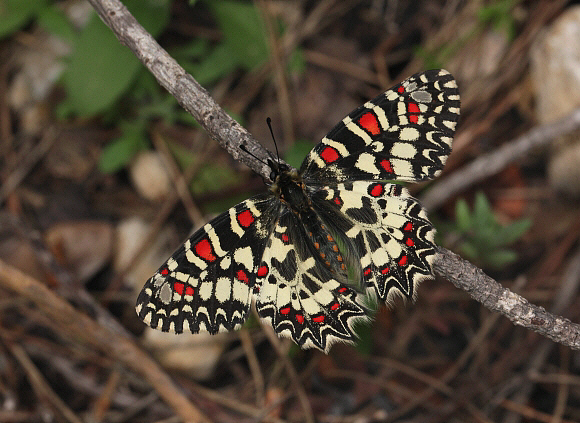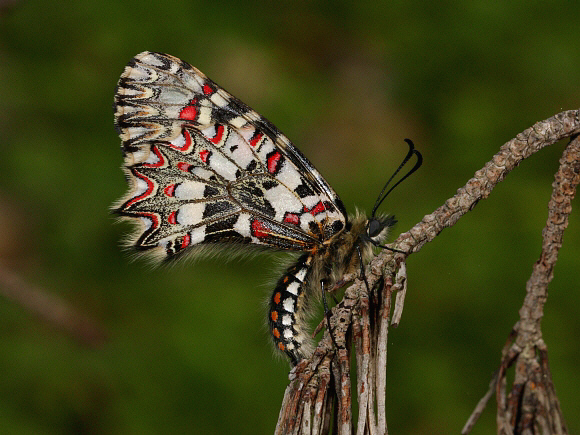 Zerynthia rumina Nerja, Andalucia, Spain – Peter Bruce-Jones
Zerynthia rumina Nerja, Andalucia, Spain – Peter Bruce-Jones
Introduction
The genus Zerynthia comprises of just 2 species, rumina and polyxena. They are distantly related to Parnassius, and much more closely related to Luedorfia, Sericinus, Allancastria and the glorious Bhutanitis species of temperate Asia.
Zerynthia rumina is found in Spain, Portugal, southern France, Morocco, Algeria and Tunisia.
 Zerynthia rumina Nerja, Andalucia, Spain – Peter Bruce-Jones
Zerynthia rumina Nerja, Andalucia, Spain – Peter Bruce-Jones
Habitats
This butterfly inhabits hot dry scrubby areas, flowery meadows and gorges, typically at elevations between sea level and about 1000m although it has been recorded as high as 1500m.
Lifecycle
The eggs are laid in small clusters on the underside of Aristolochia leaves. The larvae feed openly and rest on the upper surface of the leaves. When fully frown they are brown, with a pair of broken black dorsal lines, and prominent red dorsal and lateral tubercles, each adorned with spiky setae. The chrysalis is straw coloured with dark mottling and dark dorsal and lateral lines. It is thin with a blunt head and tapered tail. It is usually attached vertically to a stem, but is sometimes formed on tree trunks or boulders. Hibernation is in the pupal stage.
Adult behaviour
The adults have a delicate flight, pausing frequently to nectar at flowers. In the evenings they go to roost on bushes, with their abdomens arched as shown in the image below.

Zerynthia rumina Nerja, Andalucia, Spain – Peter Bruce-Jones
